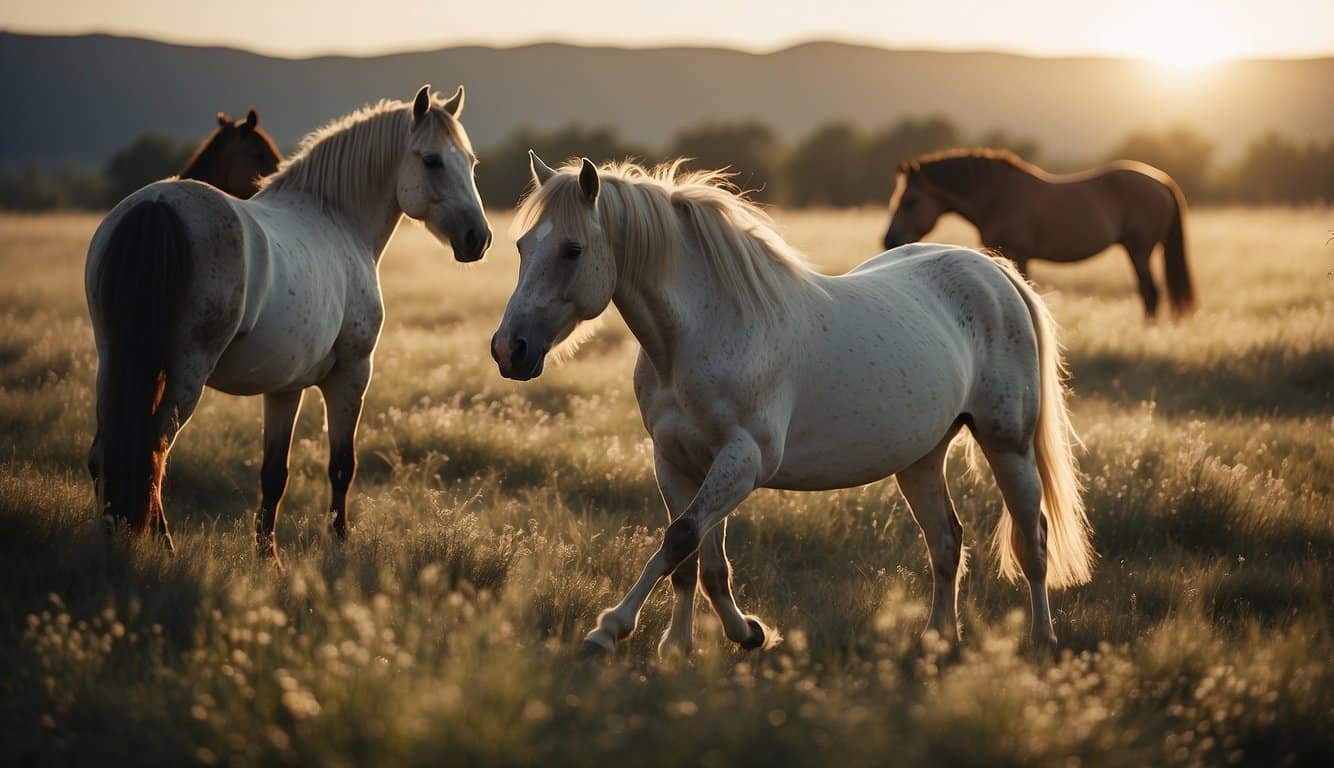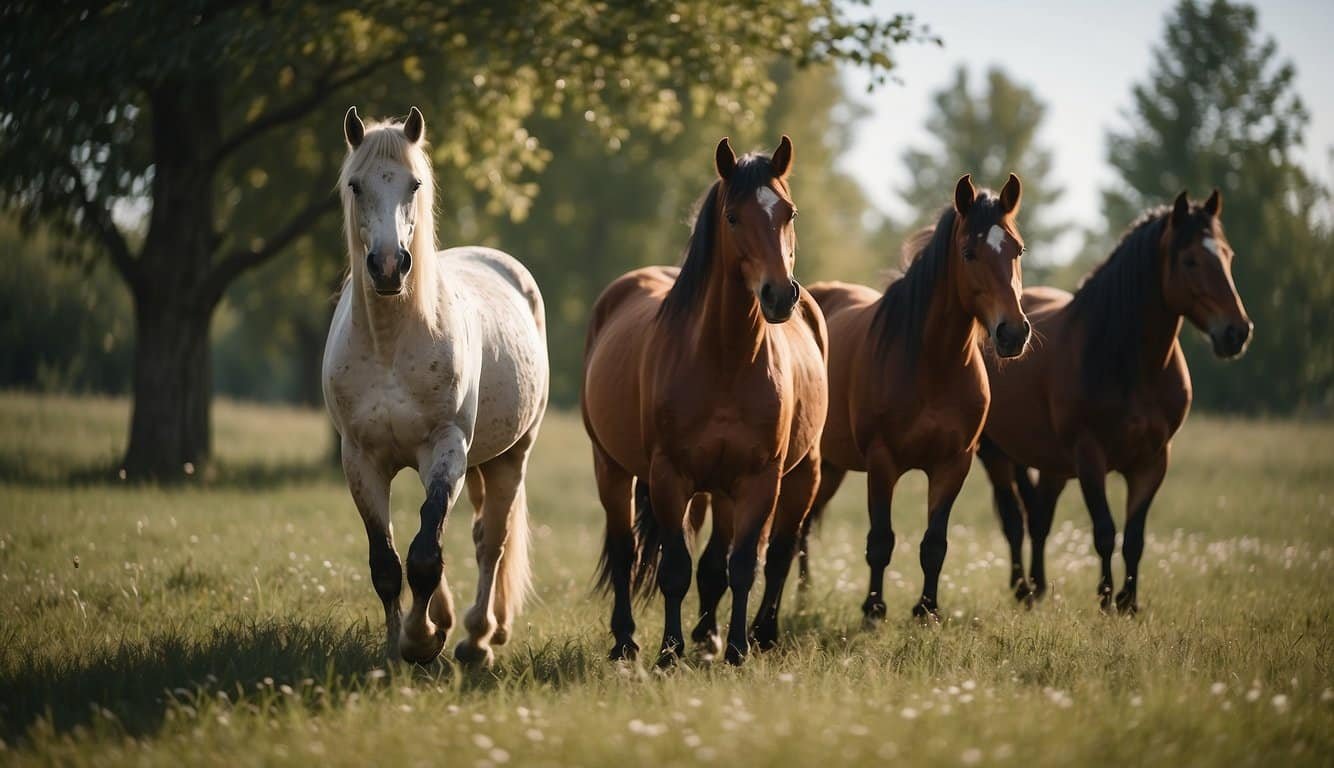Origins of the Horse
Harnessing the full journey of the horse’s development through millennia, we encounter a rich tapestry of evolutionary twists and transformations, leading from their enigmatic ancestors to the familiar steeds we know today.
Evolutionary Lineage
Horses belong to the family Equidae, which has been galloping across Earth for over 50 million years. The earliest known member of this family is the Eohippus, often referred to as the “dawn horse,” which emerged during the Eocene Epoch. This pocket-sized precursor bore little resemblance to modern horses, with a stature only as tall as a fox’s and multiple toes rather than hooves. Advancing through time, a parade of equine iterations evolved: the Mesohippus stepped onto the scene in the Oligocene, followed by the Merychippus, which was notable for its development towards a single, sturdy toe – a nascent hoof. Find more details regarding horse ancestors in the scientific analysis of equine fossils.
Geographical Beginnings
Tracing the hoofprints back geographically, horses first emerged in what is now North America, grazing through lush Eocene forests. They later trotted their way via land bridges to Eurasia, adapting along the way to the changing climates and landscapes of each epoch. As the Pleistocene ice ages reshaped the world, so too did the horse’s ancestors adapt, culminating in the Equus genus, which includes the last wild horse species like the Tarpan and all domestic horses. The spread of horse domestication in the Eurasian steppe is a narrative that speaks volumes about the adaptability and the enduring legacy of these extraordinary creatures. With each successive species, from the Pliohippus to the Tarpan, horses adapted to new environments, developing the speed, stamina, and single-hoofed grace that characterize the equine form.
Journey to Domestication

The domestication of horses marks a pivotal moment in human history, influencing transportation, agriculture, and warfare. This journey began thousands of years ago and remains significant as it laid the foundation for the development of various horse breeds we see today.
First Steps to Taming
The initial steps toward horse domestication likely occurred in the vast steppes of Eurasia. Here, evidence suggests that groups in what is now Ukraine and western Kazakhstan began to harness the power of wild Equus caballus, transforming them into the domesticated horses that became pivotal to societies. The Botai culture in Kazakhstan, for example, offers some of the earliest evidence of horse domestication, with bones and fossils indicating control over these majestic creatures. DNA analysis strengthens this notion, as mitochondrial DNA from remains in this region shows similarities to that of modern domesticated horses.
Expansion of Use
Following domestication, the use of horses rapidly expanded across various regions, becoming essential for activities such as riding and breeding. Through selective breeding, early horse tamers fine-tuned various traits to improve stamina, speed, and temperament, which helped in developing distinct horse breeds. Ancient forests once posed significant challenges to control herds of wild mares, but as humans managed to tame and breed horses, these landscapes were traversed more easily. The movement of domesticated horses can also be tracked to their spread over the Bering Land Bridge, indicating the integration of these animals into diverse environments and cultures.
Roles and Impact on Human Civilization

From altering the dynamics of ancient warfare to revolutionizing agriculture and transportation, horses have dramatically shaped human civilization across various continents and eras. Their presence and domestication have drastically influenced societal development, warfare strategies, and economic expansion.
Warfare and Conquest
Horses played a pivotal role in the expansion of empires and the conduct of wars, particularly in the Eurasian steppes, where their speed and endurance were unmatched. The use of horses in warfare dates back to the Bronze Age, with chariots being among the earliest applications in battle. As riding techniques evolved, so did the military strategy, with horses becoming integral to the conquests that shaped nations. For instance, the Mongol Empire, emerging from Mongolia and led by figures like Genghis Khan, utilized the endurance and speed of horses to create one of the largest empires in history.
Agriculture and Transportation
In agriculture, horses revolutionized the way humans cultivated grasslands and maintained crops. With their significant strength and size, horses became the prime choice for pulling plows and other heavy farm equipment. This transformation in agricultural practice was particularly evident in regions like Central Asia and the Americas, where the presence of vast grasslands provided an ideal habitat for horses. In transportation, their role was no less significant. Whether for personal travel or as a means of trade, the speed and ability of horses to cover long distances changed the dynamics of human mobility and the exchange of goods across continents.
Through their use in warfare, agriculture, and transportation, horses have left an indelible hoofprint on human history, shaping societies in ways that are still evident today.

